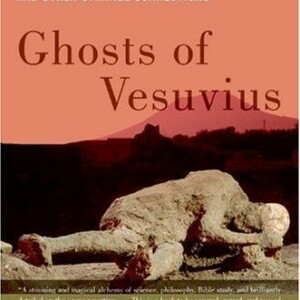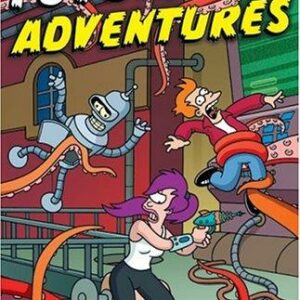Horizontal Vertigo
$19.00
| Title | Range | Discount |
|---|---|---|
| Trade Discount | 5 + | 25% |
- Description
- Additional information
Description
At once intimate and wide-ranging, and as enthralling, surprising, and vivid as the place itself, this is a uniquely eye-opening tour of one of the great metropolises of the world, and its largest Spanish-speaking city.
Horizontal Vertigo: The title refers to the fear of ever-impending earthquakes that led Mexicans to build their capital city outward rather than upward. With the perspicacity of a keenly observant flaneur, Juan Villoro wanders through Mexico City seemingly without a plan, describing people, places, and things while brilliantly drawing connections among them. In so doing he reveals, in all its multitudinous glory, the vicissitudes and triumphs of the city ’s cultural, political, and social history: from indigenous antiquity to the Aztec period, from the Spanish conquest to Mexico City today—one of the world’s leading cultural and financial centers.
In this deeply iconoclastic book, Villoro organizes his text around a recurring series of topics: “Living in the City,” “City Characters,” “Shocks,” “Crossings,” and “Ceremonies.” What he achieves, miraculously, is a stunning, intriguingly coherent meditation on Mexico City’s genius loci, its spirit of place.“Villoro recounts his adventures with a mix of irony and empathy, with a sense of humor and a feeling for the absurd. He is exquisitely attuned to the capital’s contradictions and nuances, and he knows how to listen to its inhabitants. There are deeply moving moments in this book.”
—The New York Times Book Review
“One of Mexico’s most celebrated contemporary writers offers an affectionate exploration of the country’s capital city. [Villoro] does not shy away from issues of poverty, class, and gender, and the result is an enthralling, often funny depiction of a city that ‘overflowed urbanism and installed itself in mythology.’”
—The New Yorker
“Horizontal Vertigo is the best—wittiest, wisest, most detailed and enlightened—book I’ve read about Mexico City. It is both deeply personal and scholarly, and most of all humane and humorous – Juan Villoro’s triumph as a chronicler of Mexican life.”
—Paul Theroux, author of On the Plain of Snakes: A Mexican Journey
“The joy of Horizontal Vertigo is that it offers a unique entry into Mexico City’s ‘inexhaustible encyclopedia’ of people, places and old traditions, complementing the history books and outperforming the tour guides… Villoro is so closely identified with Mexico City that it’s impossible to imagine how one can be known without the other, which is why his writings consistently employ the communal ‘we,’ as in this telling statement about the unbreakable bond between Chilangopolis and chilangos: ‘What was once a cityscape is now our autobiography.’”
—The Los Angeles Times
“Juan Villoro, one of Mexico’s leading novelists, delivers a contemporary portrait of Mexico City that is as diverse and labyrinthine as the city itself. In Horizontal Vertigo: A City Called Mexico, he weaves together voices, styles and disciplines in a personal and expansive exploration, a flâneur through geography, history and culture.”
—The Guardian
“Deeply learned . . . Along his leisurely, illuminating path, Villoro delivers an essential update of Octavio Paz’s The Labyrinth of Solitude (1950). He can be both brittle and funny . . . Celebrating food, wandering through earthquake-struck ruins, reflecting on literary heroes, Villoro makes an excellent Virgil. An unparalleled portrait of a city in danger of growing past all reasonable limits.″
—Kirkus Reviews [starred review]
“This is a stimulating portrait of one of the world’s most mind-bending metropolises.″
—Publishers Weekly
“Villoro applies his witty and incisive pen to the monster that is Mexico City . . . Villoro’s voice is engaging, and the subject matter, fascinating . . . An unusual and rewarding read for all who love or are intrigued by Mexico City.″
—Booklist
“This is Villoro’s masterpiece . . . His great achievement in Horizontal Vertigo resides in his ability to understand and make the city known through different characters, occupations, and beliefs. Although many writers have been interested in Mexico City, such as Carlos Monsiváis and Carlos Fuentes, Juan Villoro finds a new, postmodern way of portraying the contemporary city.”
—World Literature Today
“One of the ten best nonfiction books of the year. A superheroic effort to tame the urban chaos that was born of an ecocide: the drying up of a lake. No city is wilder, more monstrous than Mexico’s capital. And few writers know it with more precision and passion than Juan Villoro.”
—The New York Times en Español
JUAN VILLORO is Mexico’s preeminent novelist. Born in Mexico City in 1956, he is the author of half a dozen prize-winning novels and is also a journalist. In 2004, he received the Herralde Prizefor his novel El testigo (The Witness).1
Entry into the Labyrinth
Chaos Is Not Something You Improvise
For almost twenty years I’ve been writing about Mexico City, a mélange of chronicles, essays, and personal memories. The juxtapositions the cityscape entails—the tire shop opposite the colonial church, the corporate skyscraper next to the taco stand—led me to create a hybrid genre, a natural response to an environment where the present is affected by stimuli from the pre-Hispanic world, the Viceroyalty, modern and postmodern culture. How many different times does Mexico City contain?
The area is so huge you might think it consists of different time zones. And at the outset of 2001, we were actually on the verge of creating more of them. The newly elected president Vicente Fox suggested inaugurating daylight savings time, but the head of the government of the then Federal District, Manuel López Obrador, refused to institute it. Since there are streets where the sidewalk on one side of the street is in Mexico City and the one opposite it is in the State of Mexico, the possibility of gaining or losing an hour by crossing the street became a possibility. The politicians stubbornly stuck to their chronological barriers until, unfortunately, the National Supreme Court declared it absurd to have two time zones. So we lost our chance to walk a few yards and pass from federal time to capital time.
In this valley of passions, space, like time, suffers variations, beginning with nomenclature. For decades, we used the term “Mexico City” to talk about the sixteen neighborhoods that made up the Federal District and the new zones annexed to it from the State of Mexico. The term was a handy shortcut, so linguistic academics advised writing the word city with a lower-case “c.” After 2016, the Federal District became Mexico City and acquired the same prerogatives held by the other states in the republic, but its name remained ambiguous because it does not include the entire metropolis (as did the moniker Mexico city) but only a part of it, which previously had been the Federal District. Welcome to the Valley of Anáhuac, where space and time converge!
Syncretism has been our most helpful formula for creating a city. This is true in terms of both building and remembering it. The different generations of a single family turn the city into a palimpsest of memories, where grandmothers reveal hidden mysteries to their granddaughters.
Take, for example, the intersection called Central Axis (formerly San Juan de Letrán) and Madero in the heart of the capital. My paternal grandmother lived opposite the Alameda Central, and her generation’s idea of “modern” was the Palace of Fine Arts, that strange deployment of marble evocative of Ottoman fantasies. My generation associated it with a Las Vegas casino. For my mother, the modernity of that zone was embodied in the Lady Baltimore coffee shop, of European inspiration. For me, the outstanding sign of the times is the Latin American Tower, standing on that corner and built in the year I was born, 1956. Finally, for my daughter, the concept of the new is opposite the tower in Frikiplaza, a three-story commercial building dedicated to manga, anime, and other products of Japanese popular culture. So on that corner the “modernities” of four generations in my own family coexist. Instead of a single time and place, we live in the sum and juncture of different times and places, a codex simultaneously physical and one composed of memories of crossed destinies.
Without realizing I was beginning a book, I conceived the first of these texts in 1993, when I visited Berlin to present the German translation of Argón’s Shot. Since my novel aspired to be a secret map of the Federal District, my publisher suggested I consult an issue of the magazine Kursbuch because it contains an essay on Soviet city planning by the Russian-German philosopher Boris Groys: “The Metro as Utopia.” It was a revelation. To my surprise, the Soviet underground’s mirror image is our Collective Transport System.
The following year, I spent a semester at Yale University. I was guided by Groys’s essay and an anthology titled Die Unwirklichkeit der Städte (The Unreality of Cities) compiled by Klaus R. Scherpe, that I found in the labyrinth of Sterling Memorial Library; the book, which tried to understand the city as a unitary discourse, inspired me to write an essay on the Mexican metro system. It was the beginning of a project that grew and changed over the course of years along with its theme and a plan that could accommodate its eventual expansion. Faced with the proliferation of pages, I came to realize that I didn’t need an editor so much as an urban planner.
Horizontal Vertigo includes various kinds of testimonial devices. This book combines a multitude of genres, and, in a certain sense, it is various books. Structurally, it follows the criterion of zapping. The episodes do not move forward in linear fashion, but, instead, follow the zigzagging of memory or the detours endemic to city traffic.
The reader may follow from beginning to end, or choose, like a flâneur or a subway rider, the routes that interest him most: that of the characters, the places, the surprises, the ceremonies, the transitions, the personal stories (they’re all personal stories, but the sections gathered under the rubric “City Characters” emphasize that aspect).US
Additional information
| Weight | 13 oz |
|---|---|
| Dimensions | 5.1875 × 8.0000 in |
| Imprint | |
| Format | |
| ISBN-13 | |
| ISBN-10 | |
| Author | |
| Audience | |
| BISAC | |
| Subjects | history of Mexico, science, best books, e books, best books 2023, social engineering, new releases books, retirement gifts for women, gifts for travel, mexico city map, birthday gifts for women, anniversary gifts for boyfriend, dads birthday gifts, new releases books 2023, wedding anniversary gifts for him, anniversary gift for him, world globe, Vertigo, Sociology, travel, evolution, maps, SOC008000, mexico, mexico city, bucket list, history gifts, map, globe, science books, Travel books, travel book, TRV014000, 50th birthday gifts men |










